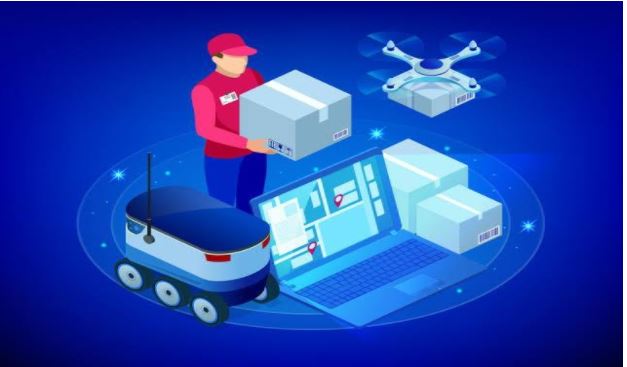Integration of software in the logistics and transportation operations streamlines the movement of goods in the supply chain process. A Transport Management System/Software (TMS) helps you manage the distribution of goods from the point of production to consumption. It is a logistics platform that is used in supply chain management to streamline transporting operations. You can integrate this platform into your business to plan, execute, and optimize the end-to-end movement of the inflow and outbound movement of goods. A TMS solution also enables you to maintain compliance with the standard protocols.
TMS software gives deeper visibility into the physical movement of goods, services, and related information. It allows you to deliver freight timely by monitoring the transportation flow in real-time. It uses GPS tracking features to identify a good’s location, gathers data, and deliver IT solutions for operational optimization. A transportation management system brings transparency to the daily dispatch tasks, lowers running costs by enabling the enterprise to use resources optimally. It allows you to manage the movement of goods through any available transportation services, be it land, air, or water.
The advanced online transport management system solution will help you optimize the transport budget, master costs, invoices, choose the best transportation medium and truck fleets. It optimizes the logistics potential of your business. The global TMS market size is expected to grow from USD 7.7 billion in 2020 to USD 17.8 billion by 2025, at a CAGR of 18.2%. A TMS solution can effectively reduce operational complexity by helping you to plan daily assignments, manage your vehicles, automate and simplify frequently executed operational tasks. It also keeps you updated with prevalent trade policies and compliance. Here are eight things you should consider when choosing the Right Transportation Management System.
· Technology And Design
While choosing a sound transportation management system that is suitable for your business, you need to ensure that it integrates the right intelligent technologies that suit your business’s capabilities. You should understand the functionalities it can deliver. A faster on-boarding for customers, carriers, and trading partners is essential. Omni-channel capabilities of the TMS software allow you to respond flexibly to customer needs. Assess the system design of your TMS solution. System design takes care of architecture, modules, interfaces, and data to satisfy specified requirements. Proper system design will help you to fill the functional gaps.
· Easy Accessibility
Cloud-based transportation management enables you to control the operation from a remote location. With cloud apps and services, the team members can collaborate from central and remote servers to optimize, plan and execute inbound and outbound product movement. Cloud computing relies on sharing data storage, computing, and security. It allows you to centralize the data, which improves the efficiency of your business. Choosing a cloud-based TMS software helps with planning, optimization, tracking, carrier management, integration, billing, and more by allowing the team members to collaborate in real-time.
· Precise Reporting
Find out if your TMS solution has the right data analytics capability to comprehensively analyze the historical data to identify data patterns and address the logistics process gaps in real-time. Enhanced analysis of the shipment data can enable you to determine the appropriate carrier for shipment based on transit time, shipping costs, and insurance limits. It is impossible to comprehend large databases manually. The data analytics tool can also gather unattainable information and provide customized reports for your business needs.
· Comparability With The Existing Infrastructure
A TMS solution improves the efficiency of the logistics handling process. It is essential to ascertain if the software will integrate rightly with the existing operations and across the range of software. It should adapt to logistics planning, management, database, and reporting tools in your business. Easy integration reduces the time needed for freight management. You can check if Enterprise resource planning (ERP) is incorporated into your TMS system to plan and manage the transport operation efficiently. A Transportation Management System is not an isolated solution, and it needs to network rightly with the existing infrastructure.
· New Delivery Capabilities
Freight Optimization is a crucial performance area to maximize productivity. It refers to the product’s movement to the customers while maintaining desired service levels in the supply chain. A TMS software should provide deeper visibility into the logistics operation to improve the delivery of goods and manage end-to-end shipments. You can increase the overall efficiency of transportation and save costs between multiple locations with such features.
· Quality of Technical Support
While selecting a Transportation Management Service solution for your business, it is essential to ascertain if your supplier has experience in the right industry. A reliable supplier will provide a timely and responsive level of support and orientation. Ask your provider if they will provide the necessary support during the lifecycle of the software solution. They should have a technical support team to help you with the transition process while integrating the software into your business.
· Flexibility and Scalability
Choose a scalable TMS solution for your business. As your business capabilities will expand, your software should be able to accommodate a larger crowd. It should be able to meet the fluctuating needs of your enterprise. Choosing flexible and scalable software that can be expanded or upgraded on-demand reduces the demand to invest heavily in additional IT capacity.
· Cost Of Ownership
Determine your budget to buy the right software solution. Shop around and check the features and associated prices to make an informed decision. The software should be able to generate a high ROI and improve conversion rates. Choose software with a good return on investment.
To Conclude:
While selecting the right TMS software for your organization, look for the features mentioned above. A TMS solution provides enhanced visibility into end-to-end shipments procedure. Assess the cost, expertise of supplier, reliability, flexibility, and scalability of the software solution to choose a responsive, accurate, and adaptable solution for your business.
